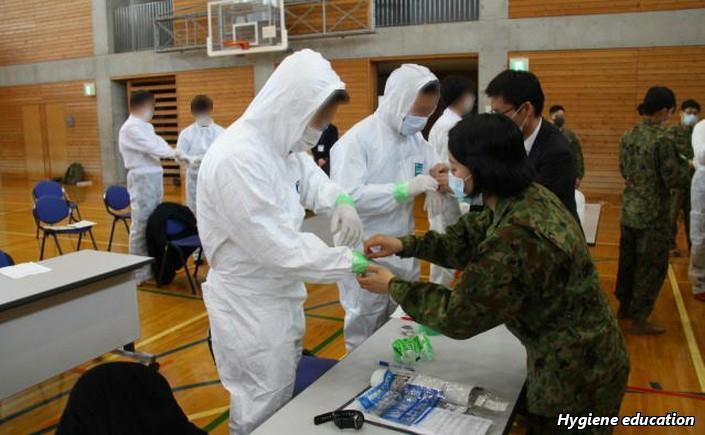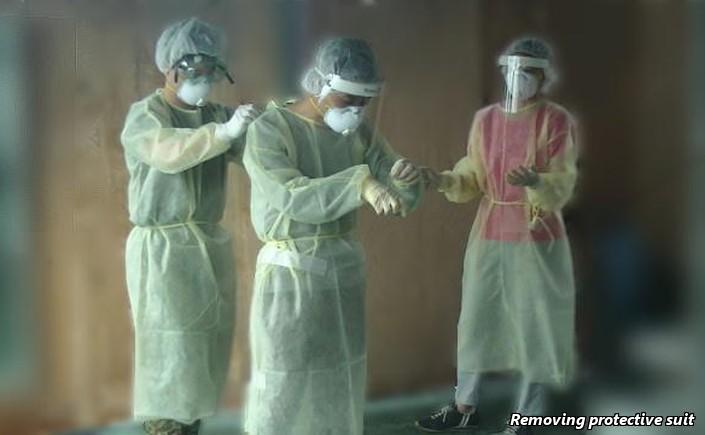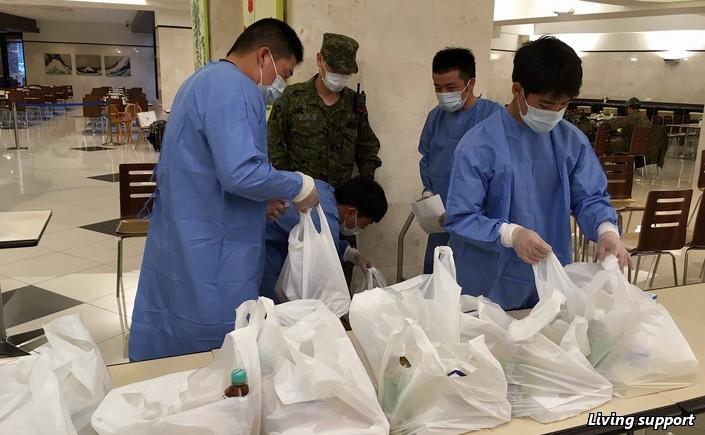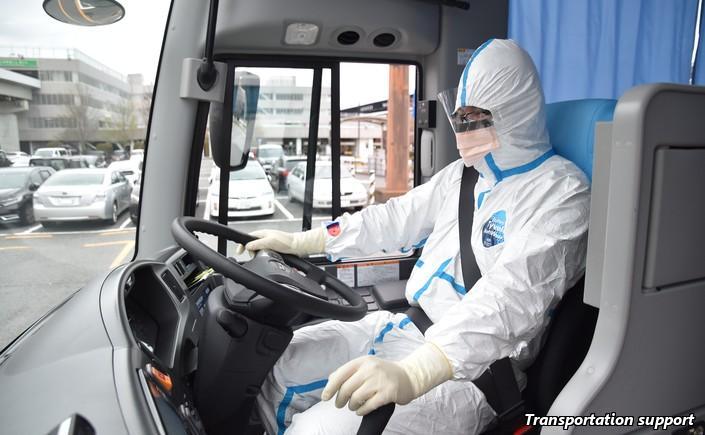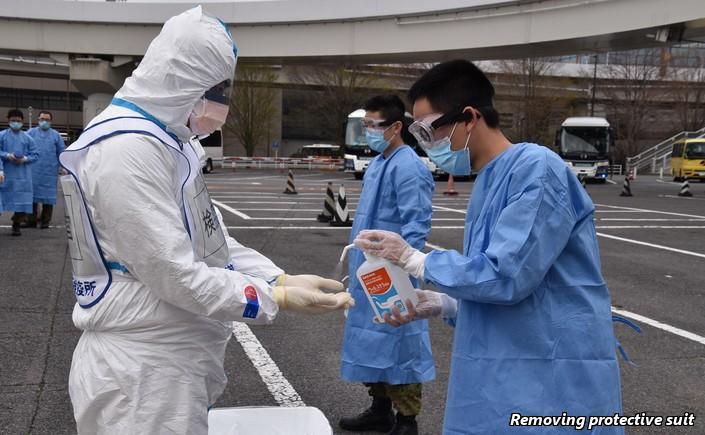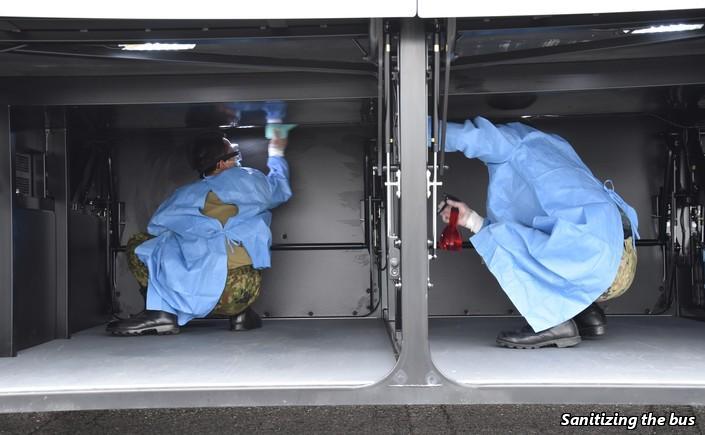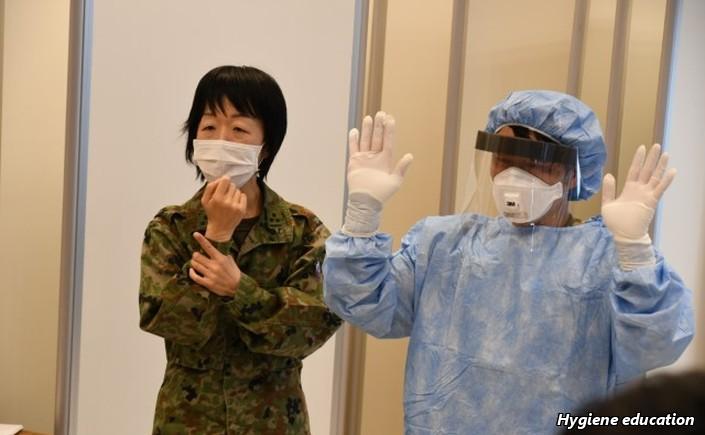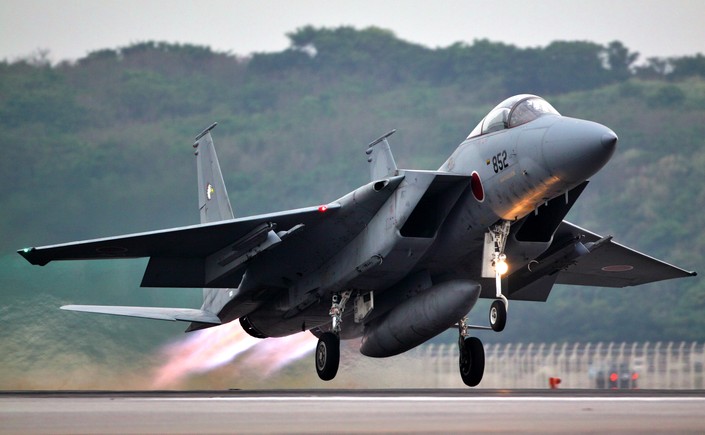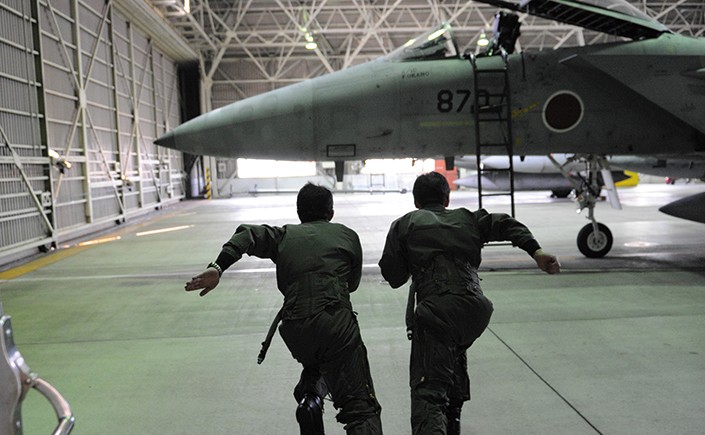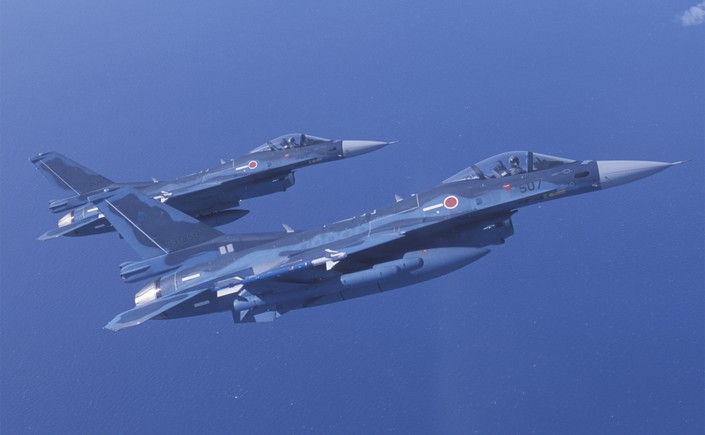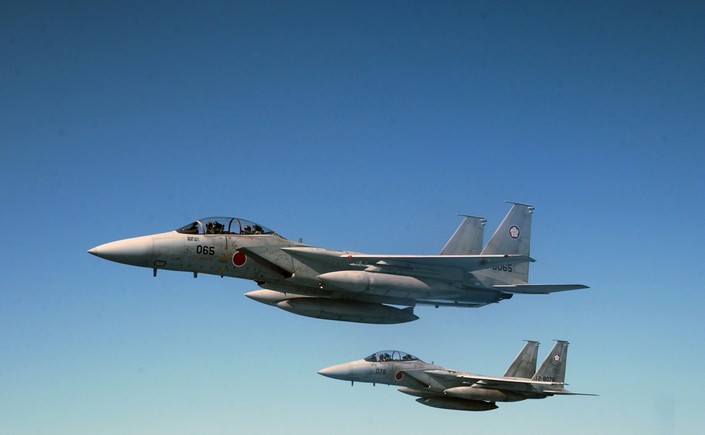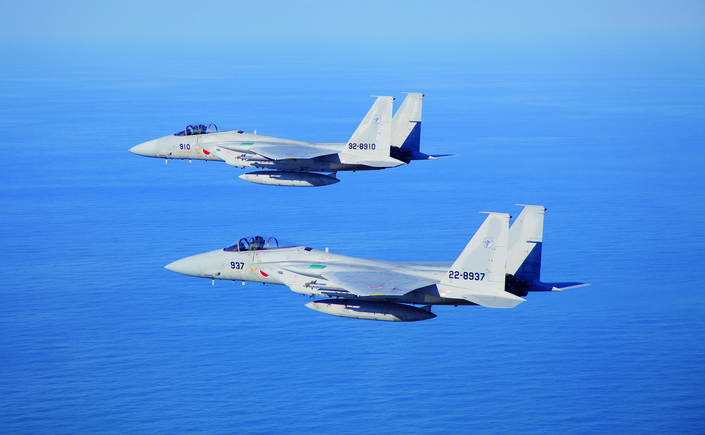ACTIVITIES
Disaster Relief Dispatch in Response to COVID-19 after March 28
To respond to COVID-19, Minister of Defense Kono ordered disaster relief operations on March 28th in order to implement measures aiming for strengthening border control and preventing the spread of COVID-19 in Japan.
Following the order, the MOD/JSDF provided support activities including quarantine support, transport support, and living support to returnees and visitors to Japan who arrived by air from overseas. Further, the MOD/JSDF conducted domestic activities to prevent community-level spread of COVID-19.
Support for returnees and visitors from overseas
To provide quarantine support, JSDF medical personnel collected body fluid from returnees and visitors at Narita and Haneda airports for PCR test. Transportation support was offered to transport Japanese returnees and visiting foreigners to accommodation facilities from the airports (Narita, Haneda, Kansai International, Chubu International), where they would stay until PCR test results were confirmed. In addition, living support (meal distribution, etc.) was provided to returnees and visitors staying at accommodation facilities in the Kanto, Kansai, and Chubu regions.
The JSDF disaster relief operations to strengthen border control to tackle the spread of COVID-19 based on the March 28 dispatch order ended on May 31st.
Activities to prevent community spread of COVID-19
Based upon requests from prefectural governors, etc., the JSDF implemented support activities in 29 prefectures to help prevent the spread of COVID-19 in communities. These activities include transportation support, living support at accommodations, support for body fluid sample collection, and support for hygiene education for private businesses such as hotels and related people such as medical personnel, local government employees, and personnel at fire and police departments. Hygiene education covered topics such as a briefing on COVID-19, procedures for putting on and off protective clothing, and sanitation measures.
(All the information in this article is as of the end of May.)
Scrambles through the FY2019
The JASDF detects and identifies aircraft approaching the Japanese airspace with assets such as warning and control radars, and airborne early warning and control aircraft. By such means, the JASDF ensures the security of Japan’s airspace. When there is the possibility that aircraft violates the territorial airspace of Japan, the JASDF scrambles its fighter aircraft to gather detailed information of the aircraft, and if necessary, track and monitor it.
The JASDF scrambled 947 times in the FY2019 (April 1st, 2019 - March 31st, 2020). Although this was a decrease by 52 times compared to the FY2018, the record was the third most since Japan first implemented the measures against airspace violations in 1958. Including estimates, the flag countries of the aircraft, forcing the JASDF to take actions, were China with 675 scrambles (approx. 71%), Russia with 268 scrambles (approx. 28%), and other countries with less than 1%. By regional air defense forces, the Northern Air Defense Force scrambled 198 times, the Central Air Defense Force 35 times, the Western Air Defense Force 133 times, and the Southwestern Air Defense Force 581 times.
The Chinese military flights marked as unusual include the flight of H-6 bomber that flew between the main island of Okinawa and Miyako Island and the new Y-9 surveillance aircraft, which was visually confirmed for the first time.
Unusual flights by Russia include the violations of Japan’s airspace by Tu-95 bomber and A-50 airborne early warning and control; and the first visual confirmation of Su-34 fighter bomber. In the FY2019, all three publicly announced cases of airspace violation were the acts by Russian aircraft.




